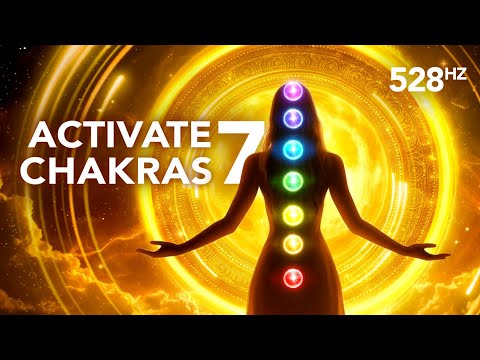Imagine you’re sitting at your desk, your shoulders tensed up after hours of work. You might consider relaxation techniques like paired muscle relaxation or progressive muscle relaxation to ease the tension.
Paired muscle relaxation and progressive muscle relaxation are both relaxation techniques that involve tensing and then releasing muscles in the body. The main difference between the two techniques is the order in which the muscles are tensed and released.
With paired muscle relaxation, you’ll tense and then relax specific muscle groups in a particular order, often combining the process with breathing techniques to enhance relaxation. It’s a method that creates a contrast, making you more aware of what relaxation feels like.
In contrast, progressive muscle relaxation has you work through your body in a sequence from feet to head, gradually releasing tension. You’ll focus on each muscle group, developing an awareness of where you hold stress.
Both methods can safely guide you to a more relaxed state, but they offer different paths to achieve the same goal: your comfort and well-being.
Key Takeaways
- Progressive Muscle Relaxation (PMR) systematically tenses and releases each muscle group to induce a relaxation response, while Paired Muscle Relaxation focuses on transitioning from alertness to calmness by tensing and relaxing each muscle group.
- PMR is a safe and controlled method to alleviate physical and mental tension, while Paired Muscle Relaxation is gentler on the body and can be done during short breaks.
- Both techniques aim to reduce stress and muscle tension effectively, but Paired Muscle Relaxation offers a unique approach with its focus on contrast and immediate relaxation.
- The choice between the two techniques depends on personal comfort level, time commitment, stress levels, and any physical limitations.
Understanding Muscle Relaxation
Before delving into the specifics of each technique, it’s essential to grasp why any form of muscle relaxation can significantly impact your overall stress levels.
Progressive Muscle Relaxation (PMR) and its variations like paired muscle relaxation aren’t just relaxation exercises; they’re powerful tools for your well-being. By intentionally tensing and then releasing different muscle groups, you create a profound sense of physical relief that echoes through your mind.
As you take deep breaths and focus on the shift from tension to relaxation, you’re engaging in a relaxation technique that’s been trusted for nearly a century. It’s a safe, methodical process that gradually teaches your body to recognize and release the grip of stress, paving the way for calmness and a sense of safety.
Defining Progressive Relaxation
You’ll first need to understand that progressive muscle relaxation, or PMR, is a technique where you systematically tense and then release each of your muscle groups, one at a time. Developed by Edmund Jacobson in the 1920s, this method aims to induce a relaxation response by focusing on one muscle group at a time.
As you apply tension to a muscle, you become acutely aware of the feeling. Then, when you release the tension, you notice the contrast, which can lead to a deeper sense of relaxation throughout your body.
PMR is particularly beneficial in helping you reduce stress and can be an effective tool against anxiety, insomnia, and chronic pain. It’s a safe and controlled way to alleviate physical and mental tension.
Exploring Paired Relaxation
As you explore paired muscle relaxation, you’ll find it’s a technique that harnesses the natural response of your muscles to tension and relaxation. You’ll appreciate its benefits as you learn to fine-tune your body’s stress signals and cultivate a deeper sense of calm.
Understanding the distinctions between paired and progressive relaxation methods can empower you to choose the best approach for your stress management needs.
Paired Relaxation Techniques
When exploring paired relaxation techniques, you’ll discover that it’s a method where you engage in a series of muscle contractions and relaxations to achieve a tranquil state of mind. This approach is designed to reduce anxiety and promote a deep state of relaxation.
Here are some compelling reasons to give it a try:
- Systematic Approach: Target one muscle group at a time for focused relaxation.
- Complementarity: Enhances other relaxation techniques for greater well-being.
- Accessibility: Can be done anywhere, aiding in immediate stress relief.
Paired muscle relaxation is a cornerstone of Progressive Muscle Relaxation, embracing the power of mindfulness and physiological control. It’s not just about relaxation; it’s a journey towards cultivating a resilient and serene mindset.
Benefits of Paired Approach
Exploring the benefits of the paired approach in muscle relaxation, you’ll notice an immediate easing of tension that fosters a tranquil mind and a relaxed body. Unlike Progressive Muscle Relaxation, which focuses solely on the gradual release of tension, paired muscle relaxation introduces an initial tension phase.
This contrast heightens the subsequent relaxation effect, leading to a more profound decrease in anxiety.
The benefits of the paired approach extend to reducing stress levels, making it a powerful ally in your quest for calmness. As you engage in this practice, you’ll discover that it not only helps to reduce anxiety but also enhances your ability to manage daily stressors.
Consequently, your overall well-being improves, signaling the true power of the paired muscle relaxation technique.
Paired Vs. Progressive Differences
Understanding the nuances between paired and progressive muscle relaxation techniques can significantly enhance your stress management repertoire.
Paired muscle relaxation focuses on:
- Tensing and relaxing each muscle group to transition smoothly from a state of alertness to one of calm.
- Its adaptability, allowing you to practice virtually anywhere, whether you’re at home or on the go.
- The ability to immediately reduce anxiety by creating a sharp contrast between tension and relaxation.
This technique contrasts with Progressive Muscle Relaxation, which systematically works through the body’s muscle groups in a particular sequence. While both methods aim to reduce stress, paired relaxation offers a unique approach by emphasizing the immediate sensation shift from one muscle group to the next.
Techniques Compared
How do you distinguish between the techniques of paired muscle relaxation and progressive muscle relaxation in your daily routine? When you’re aiming to reduce anxiety and stress, knowing these methods can be invaluable.
Progressive muscle relaxation is a method where you tense and relax muscle groups one at a time, in a specific order. It’s a deliberate practice, typically set aside for 10-20 minutes each day.
In contrast, paired muscle relaxation pairs deep breathing with muscle relaxation and can be effectively used in various settings, even on the go.
Both techniques compared offer unique benefits. Progressive muscle relaxation enhances awareness of bodily tension, promoting a top-down and bottom-up relaxation process. Meanwhile, paired muscle relaxation is a more immediate way to shift from stress to tranquility.
Understanding these distinctions ensures you can safely apply the right technique to suit your needs.
Benefits of Progressive Relaxation
In light of the distinctions between progressive and paired muscle relaxation, you’ll find that progressive relaxation offers a structured approach to easing muscle tension and enhancing mental calmness. Progressive Muscle Relaxation (PMR) can be a cornerstone in your journey to improved mental health, especially when practiced regularly.
- Reduce Anxiety: PMR is proven to lower anxiety levels, providing a sense of safety and control.
- Alleviate Stress Symptoms: Consistent use helps in managing stress and anxiety, leading to a more balanced emotional state.
- Mental Clarity: As tension releases, mental clarity and focus improve, aiding in coping with life’s challenges.
Your commitment to this practice can significantly reduce symptoms associated with stress, contributing to a healthier, more serene you.
Benefits of Paired Relaxation
While progressive relaxation focuses on individually tensing and relaxing muscles, paired muscle relaxation combines deep breathing with muscle relaxation for a dual approach to stress relief. This method enhances the benefits of progressive muscle relaxation, allowing you to reduce stress and anxiety more effectively. By synchronizing your breath with the tension and release of your muscles, you’re not only easing physical tension but also encouraging a deeper state of relaxation.
The dual action helps regulate your body’s response to stress, potentially improving symptoms of insomnia and chronic pain. It’s a safe, complementary practice to standard treatments for various conditions, including headaches and digestive disturbances.
How Does Paired Muscle Relaxation Compare to Progressive Muscle Relaxation?
Paired muscle relaxation and progressive muscle relaxation both aim to reduce stress and tension. While paired muscle relaxation involves alternating tension and relaxation in different muscles, progressive muscle relaxation benefits individuals by gradually tensing and then releasing each muscle group in a specific sequence, promoting deep relaxation and stress relief.
Choosing Your Relaxation Method
As you explore the world of relaxation, your personal comfort level with each technique is paramount. Consider how much time you can commit to practice—some methods may fit more seamlessly into your busy schedule.
Personal Comfort Level
Your relaxation technique choice, whether paired muscle relaxation or progressive muscle relaxation, hinges on your personal comfort and ease during the practice. It’s essential to select a method that feels right for you—after all, the goal is to reduce stress and muscle tension effectively.
Consider:
- The time you can dedicate: PMR might take more time initially.
- Your current stress level: More intense stress might benefit from the focused approach of PMR.
- Any physical limitations: Paired muscle relaxation could be gentler on the body.
Remember, your personal comfort level is key. It’s not just about the technique itself but also how it fits into your life.
Time Commitment Required
You’ll need to consider the amount of time you can allocate to relaxation when choosing between paired muscle relaxation and progressive muscle relaxation techniques.
PMR, or progressive muscle relaxation, typically requires about 15 minutes to complete. Initially, it’s recommended to practice this technique twice a day, which might stretch your schedule during the first weeks. Over time, however, you’ll likely find the period of time invested leads to significant stress relief.
On the flip side, if your days are packed and you’re juggling multiple responsibilities, paired muscle relaxation might be more suitable. This method can be integrated into short breaks and requires less structure. You can take a deep breath, apply the technique, and continue with your day, ensuring safety in your relaxation practice.




